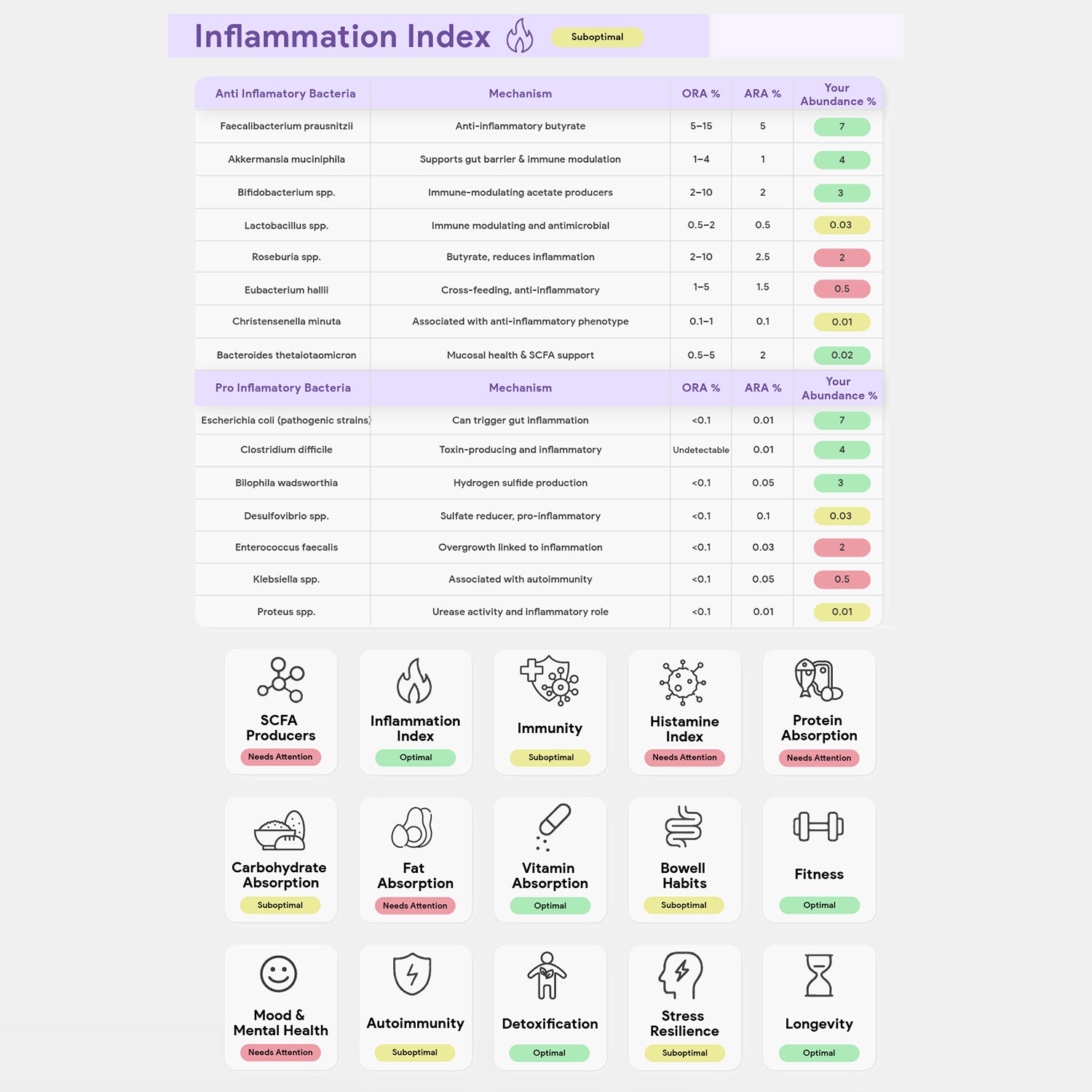Testing and Science
The science behind the Gi Map
50,000
We compare 50,000 profiled gut samples taken from two gold standard reference libraries, the Human Microbiome Project and the American Gut projectand our own rapidly growing database.
30-40 trillion
The gut microbiome is home to roughly30–40 trillion microbial cells. This figure is changing yearly as we discover more. Most of those microbial cells belong to only 3,000–5,000 gut-bacterial species.
150-200
The typical gut includes just 150–200 gut bacterial species drawn from that global pool of 3,000 - 5,000. Even closely related individuals share only a fraction of those species
We only work with accredited UK labs
ISO Accreditation 9001:2015 | 13485:2016

Our method of testing
We analyse every sample with next-generation shotgun metagenomic sequencing because it unlocks the full story of your gut microbiome and is considered the gold standard of testing

Using large, high-quality reference libraries like the NIH Human Microbiome Project (HMP)and the American Gut Project (AGP)gives us a huge database of profiled samples to compare microbiome readings against.

Each microbe and gene is matched against our two reference libraries, the Human Microbiome Project and the American Gut Project as well as our own profiled patient data so our models can see how your profile compares with tens of thousands of profiled samples.
Drawing on patterns learned from more than 50 000 profiled microbiomes and the latest microbiome and nutritional studies, the system calculates condition likelihood, which we call a "map".
Why we're different
Why choose GI map?
78% Improvement in IBS symptoms in pilot study
83% Improvement in bowel habits
Recommendations to increase gut diversity
Trusted by many UK practitioners
Supported by a team of gut health experts
83% success rate in treating chronic constipation
Fully interpreted, easy to read results
Evidenced based approach and recommendations
